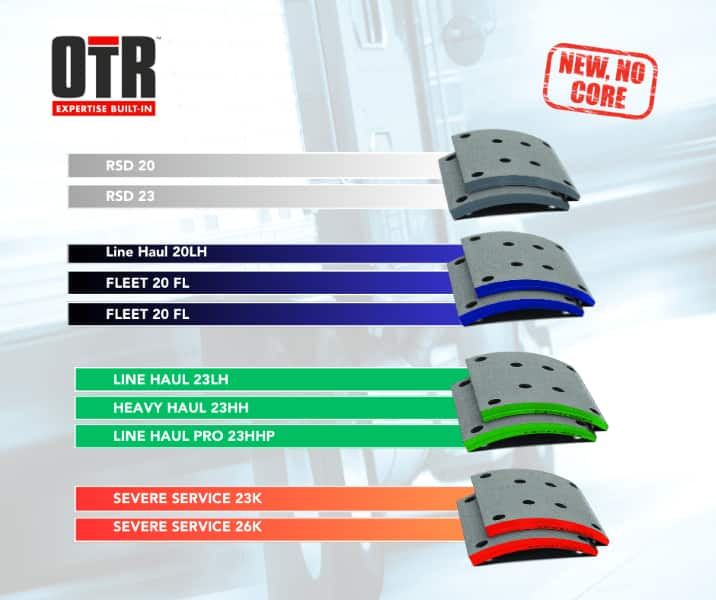Choosing the Right Brake Pad Friction Material
Revised July 19, 2023

When it comes to road safety, every single detail matters. One crucial decision that can significantly impact the safety of your vehicle is choosing the right brake pad friction material. Brake pads play a vital role in ensuring that your vehicle comes to a smooth and controlled stop.
Brake pads are an essential component of any vehicle’s braking system. Selecting the right friction material for your brake pads is crucial for optimum performance and safety. Choose the right friction material based on factors like terrain, vehicle load, driving frequency, and axle rating.
Brake Pad Friction Material: Why its Important
Brake pads use friction materials to convert kinetic energy into heat by friction when braking. This ensures consistent and safe braking performance. Manufacturers make friction materials from a variety of compounds, including organic, semi-metallic, and ceramic.
Many people struggle with choosing the right friction material for their trucks. One common challenge they face is the misconception that the highest friction coefficient is always the best option.
A high coefficient of friction provides better stopping power, but it may increase brake wear and noise. Find the optimal brake pad that meets your specific requirements by considering other factors such as load, terrain, and duty cycle.
Factors to Consider when Selecting Friction Material

Terrain
Different friction materials perform better on specific surfaces. If your routes include steep descents and mountainous regions, consider using semi-metallic or ceramic brake pads. They offer superior heat dissipation and fade resistance.
On the other hand, organic brake pads excel in city driving conditions and lighter loads. In such conditions, organic brake pads deliver a quieter and smoother braking experience.
Load
The weight of the cargo and the vehicle itself affects the braking demands. Heavier loads require brake pads that can handle higher pressures and heat generated during braking. For trucks frequently hauling heavy loads, consider using semi-metallic or carbon fiber composite brake pads. They offer exceptional durability and thermal stability.

Duty Cycle
The duty cycle refers to the frequency and duration of your truck’s operation. Trucks used for commercial purposes can benefit from brake pads made to withstand constant, heavy braking. We recommend semi-metallic or carbon fiber composite brake pads for these applications. This is due to the provision of longer service life and improved stopping power.
GAWR Rating
Matching the GAWR rating of your brake pads to your truck’s axle weight capacity is crucial for optimal braking performance. Exceeding the GAWR rating could lead to accelerated wear and reduced braking efficiency. Always make sure to choose brake pads that are rated to handle the maximum weight your truck can carry.
Price or Performance
While budget constraints are important to consider, compromising on brake pad quality for cost savings can lead to dangerous consequences. Striking the right balance between price and performance is crucial. Evaluate various brake pad options and choose a reputable brand that provides excellent performance, reliability, and durability within your budget.
FleetPride. Choosing Wisely.
Selecting the correct brake pad friction material significantly impacts the safety and performance of your heavy-duty truck or trailer. By considering factors mentioned above, you can make an informed choice that ensures effective and reliable braking.
Be wary of misconceptions and always consult with experts in the heavy-duty aftermarket industry for personalized advice. Make a wise investment in your class 6-8 semi truck brake pads today. Enjoy a safer and more efficient journey on the roads.
For single axles, school buses, mixers, dumps and refuse trucks, NEVER use the price selection. Only use the Performance Selection and discuss it with your OTR Distributor to ensure you are considering any unique braking needs.
* The foregoing is only a guide and does not include every brake drum application, for example 36K GAWR. Your specific application may have unique braking needs so discuss them with your OTR Distributors before making your selection.


